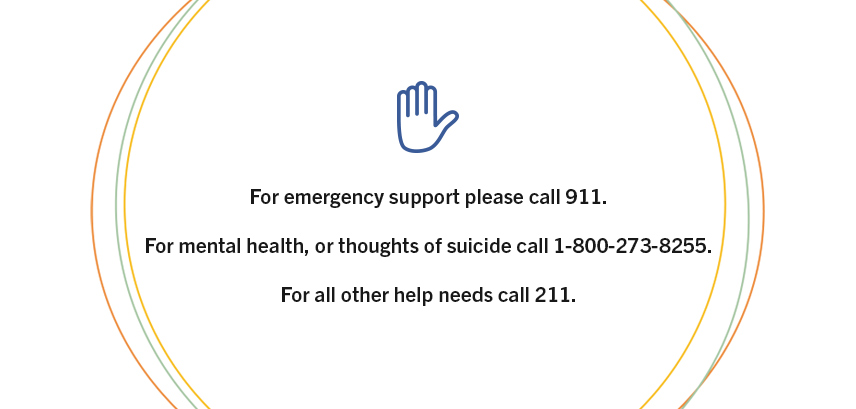The “I’m ok, are you ok?” forum continued last week with Emily Daniels of HERE this NOW presenting on Understanding and Reframing the Stress of Social Distancing. Daniels is the founder of HERE this NOW, a boutique consulting firm that provides technical assistance to those seeking to build capacity for becoming trauma-informed and trauma-responsive.
Approximately 50 attendees joined Daniels and Makin’ It Happen for the online forum. Daniels started off by asking the group how everyone was doing. She explained that stomach aches, headaches, disrupted sleep, irritability and changes in appetite were a normal response to what we are experiencing during the COVID-19 pandemic. Many of those experiences are directly related to an over-activated autonomic nervous system from a prolonged stress-inducing experience.
Daniels explained that throughout the evolution of humans, we have developed a sophisticated threat response system that defense mobilizes into fight, flight or freeze.
She referenced the work of Dr. Stephen Porges and his Polyvagal theory when describing freeze response as the most adaptive response to perceived lethal threat. Currently, society as a whole is collectively in a freeze response as a result of the pandemic. This threat coupled with the stress of social distancing has rendered many stunned, grief-stricken, and/or in a state of dissociation.
Daniels said ‘think about it – we are experiencing a universal life threat with COVID-19’ and that the ‘trauma isn’t this event, it’s how our bodies experiences the event’.
Daniels tried to impart a spirit of hope by explaining that the brain processes information “bottom-up.” In other words, engaging in patterned, repetitive, rhythmic activities multiple times every day can help “down regulate” a person’s stress response system. She emphasized a term used often by Dr. Bruce Perry – therapeutic dosing.
We must regulate with more than one walk a day. We need to think about engaging in some form of somatosensory activity multiple times a day for a period of 3-7 minutes – ideas include yoga, jumping rope, hand clapping games (teach them to your kids – Ms. Mary Mack), stretching, qi-gong (Lee Holden on youtube). When possible and while practicing safe social distance, engage these activities with others.
Social proximity and relational connectedness is still the single most effective way to buffer against the effects of prolonged stress experiences and trauma.
To view a recording of this webinar please press play.
To learn more about Daniels work visit www.herethisnow.org. Daniels is planning to offer more online events during this time and will update folks via her Facebook page https://www.facebook.com/herethisnow.org/.
Please join Makin’ It Happen next week for a teen (12-18 Years old) focused forum entitled: “Managing screen time during remote learning and remote friendships. ”Our lives have suddenly been moved online, with online learning and online communication becoming the new normal. Young people especially are facing a challenge managing their screen usage across different devices and new expectations. This youth-focused webinar will give teens the tools they need to manage their new online lives. This one-hour webinar is open to ages 12-18 and will encourage feedback, questions, and active participation.



